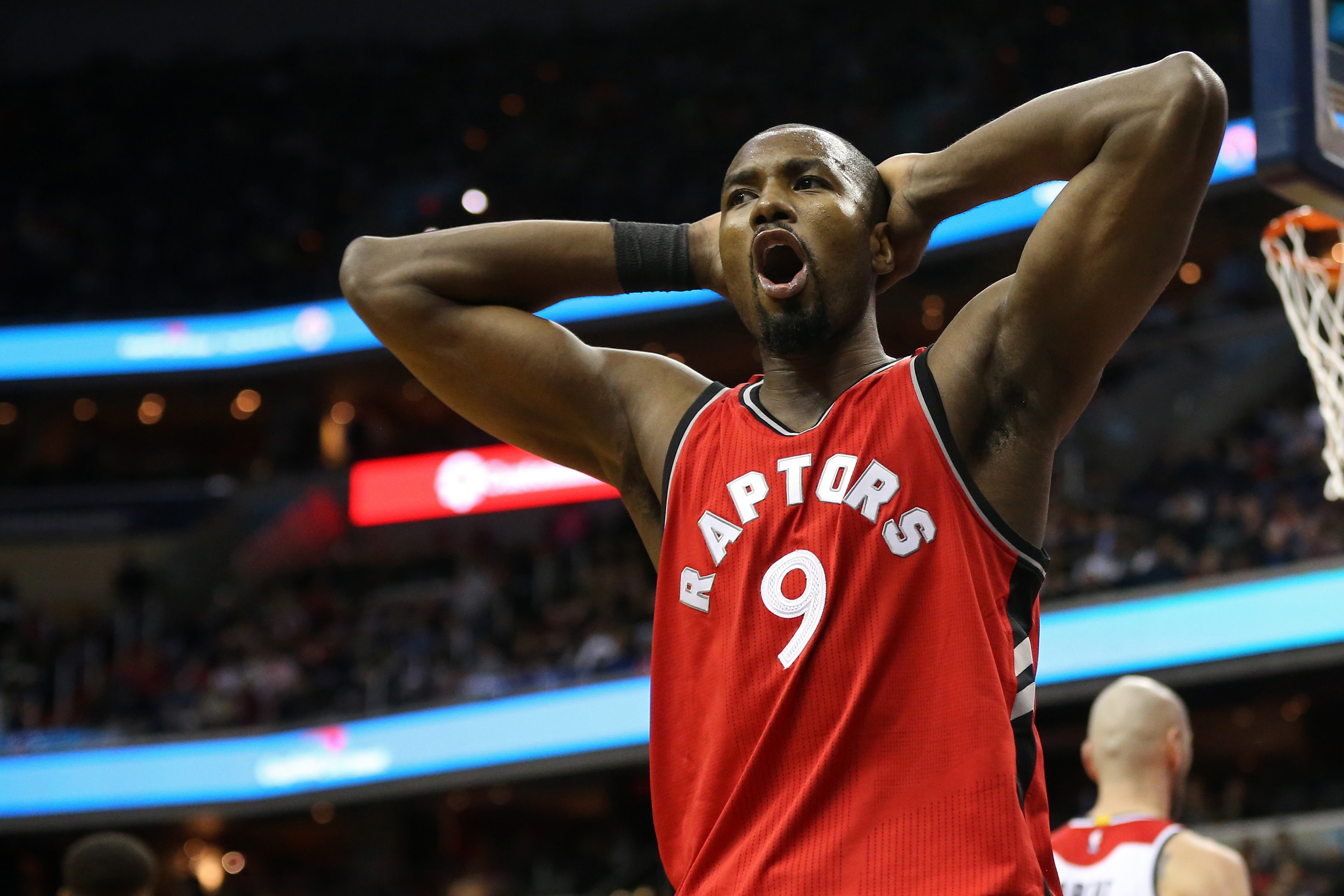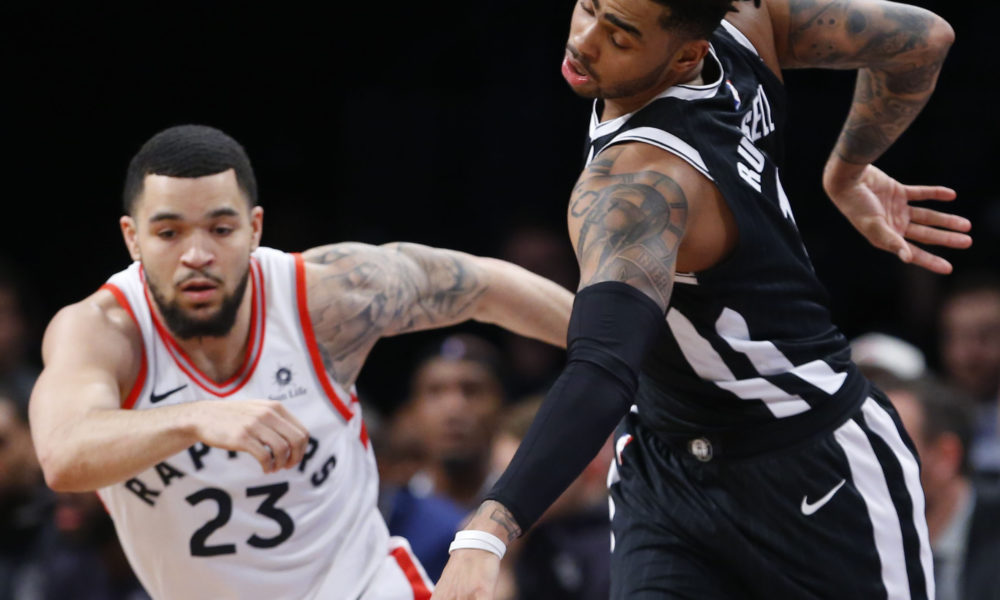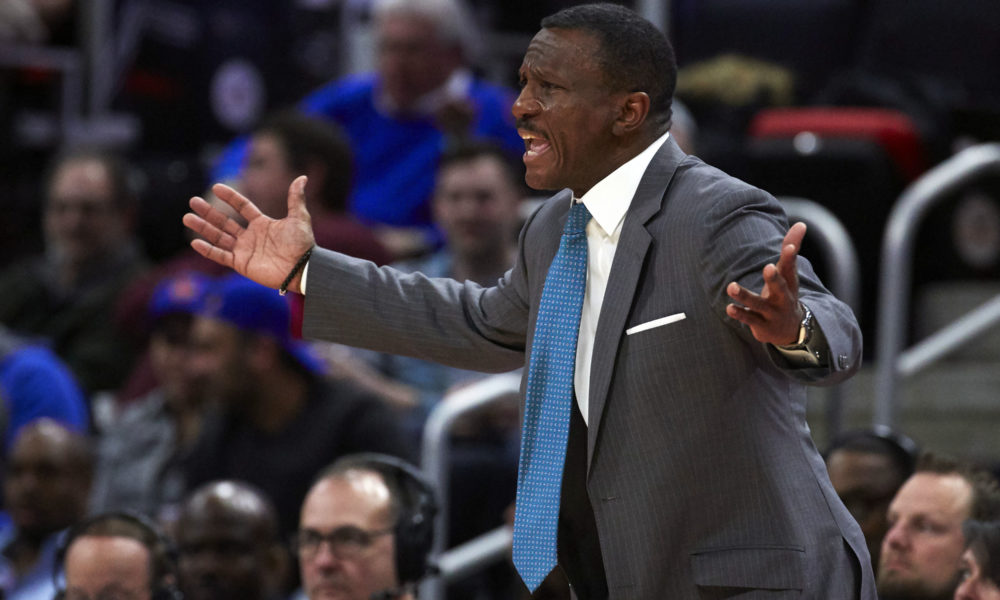Last year, at the trade deadline, the Raptors made a big move to address one of the central issues facing the squad, acquiring Serge Ibaka in exchange for Terrence Ross and a first round pick. The idea appeared to be that while Ibaka would start beside Jonas Valanciunas at power forward, the team would use him as their crunch time center, with his shooting and rim protection being vital to improving their execution in these late game situations. It appeared to work, too, with the Raptors surging down the stretch of the season, despite an injury to Kyle Lowry, with an elite defense.
Neither Lucas Nogueira or Jakob Poeltl seemed quite ready for a bigger role in the rotation at that point, and with the Raptors running an offense centered around players creating their own shots, Ibaka’s ability to space the floor and his willingness to call his own number was an asset. The numbers were never quite as certain as the eye test as to how much of the defensive improvement was due to Serge though, with PJ Tucker having a much clearer case.
This season, coming in, it seemed that again the Serge-at-center was going to be a staple, getting frequent minutes early in the season in late-game situations, with the theory behind it being that his added shooting on the floor and mobility at the center spot would help the team at both ends, keeping them able to handle switches to slow down the opposing attack while opening up lanes for DeMar DeRozan and Kyle Lowry to go to work. On the surface, the numbers are pretty good, too, with a +12.8 net rating in 203 minutes. When you dig a little deeper though, you find a few unsurprising problems with those numbers.
First of all, the 113.2 offensive rating that has been posted in those minutes has been held up by some anomalous numbers by certain role players, including Pascal Siakam(72.3% true shooting with Ibaka at center, vs. 54.1% true shooting on the season), OG Anunoby(68.8% true shooting with Ibaka at center, vs. 57.2% on the season) and Delon Wright(85.7% true shooting with Ibaka at center, vs. 58.1%). It’s entirely possible that running Serge in the middle enables some offensive wrinkles that lets the role players get off higher quality shots, but those percentages all seem due for some regression.
At the same time the Raptors assist rate drops massively in this groupings, with just 49.1% of buckets coming assisted. This resembles more the Raptors of years past than this year’s groups, with a lot of emphasis on individual players finding ways to score. The simple culprit here would be that the Raptors have become an extremely effective screening team this season, led by Jonas Valanciunas and Jakob Poeltl, both of whom excel in the pick and roll game, and Ibaka doesn’t have that same aptitude. For Valanciunas, he’s been able to find his shot from long distance, where he’s shooting 43.7% this season, and use that to either score in the pick and pop game when the defense focuses on removing the attack in the paint, or to pull enough defensive attention away to let the ball-handlers find mismatches going to the basket, while also scoring on the roll when it’s been available. At the same time, among high-minutes players this season, Poeltl ranks among the league leaders at 5.6 screen assists per 36 minutes, and his ability to read the defense and use his frame to create space for his teammates has helped open up the offense for the Raptors bench, despite his lack of an outside shot.
The screen game is too important to these Raptors this year, whether it’s off-ball screens to allow C.J. Miles or Kyle Lowry the room to get off a three-point shot in the context of the offense, or giving DeMar DeRozan the space to attack a seam and create either for himself or a teammate, and the Raptors are unquestionably better at this when they have one of their centers on the floor.
Jonas hasn’t yet established himself enough as a three-point threat that it’s a consistent, recognized weapon, at least not on the same level as Ibaka, and if we were simply talking about the ability to hit an open jumper, Ibaka is the better player. But more often than not, an open shot from anywhere on the court is a result, and doesn’t simply offer itself up. You have to run offensive actions to get the defense in motion in order to create that opportunity, and both Valanciunas and Poeltl have proven themselves more adept than Ibaka, when playing that center position, at assisting the Raptors offense in getting those opportunities. This isn’t to say that Ibaka shouldn’t be on the floor in crunch time situations, simply that he should be complimenting one of these players to benefit from their ability to draw in defensive attention and create open shots, rather than replacing them.
The question then comes to the defensive end of the floor, where Ibaka brings more mobility than Jonas does, with the added benefit of his athletic shot-blocking ability. It’s true this season, as well, that Serge has shown signs of still having that defensive presence, with some impressive highlight reel blocks at times. However, against opponents who would rather bang in the post, he doesn’t have the frame to handle those bigger centers, and the answer will always be Valanciunas for this team, who has shown the ability to hang with any of the league’s bigger centers defensively while getting his own at the offensive end, and has improved his own defense in the pick and roll enough to be serviceable, despite the fact that he’ll still never be the most mobile of big men.
The other matchups, when the opponent opts to go smaller and space the floor with their own center and attempt to create an advantage with shooting and mobility, the question becomes whether Ibaka provides a better matchup than Poeltl, and it’s hard to come out on the side of Ibaka here as well. Simply put, Jak has demonstrated that he can handle switches onto some of the best point guards in the league.
Again, this isn’t to say that Ibaka shouldn’t be playing in these situations, or that he in some way harms the team when he’s out there, it’s simply that the center position is one of strength for the Raptors, and they don’t need to look to go smaller to match up, instead having the ability to create their own mismatches using their personnel. This allows Ibaka to play at his more natural position of power forward and be the beneficiary of the space created at both ends of the floor by Valanciunas and Poeltl, both in getting open shots through their ability to affect defenses and in terms of them not forcing him to guard the bigger players and having more room to be an effective, mobile defender. Barring foul trouble or injury though, needing Ibaka to be a center should no longer be necessary for the Raptors, which should be to the benefit of both him and the team.



